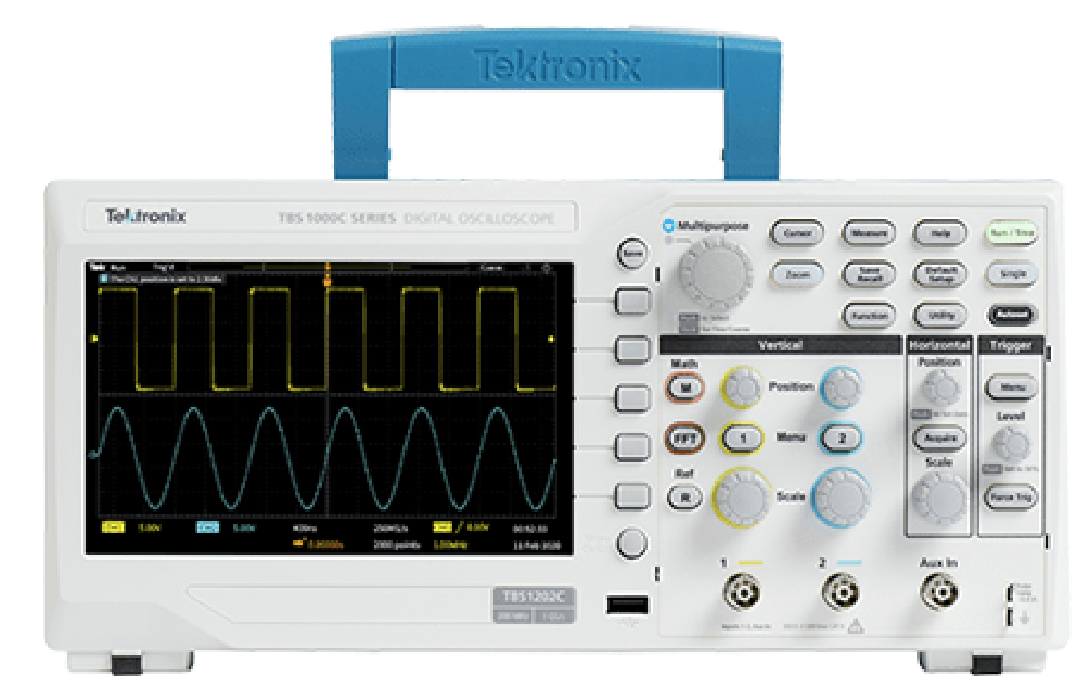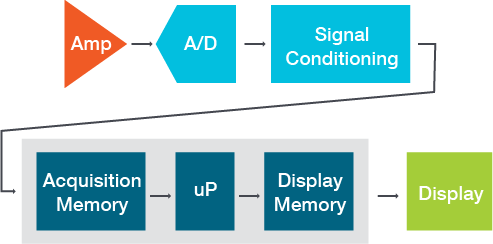Oscilloscope - for people with OCD #
An oscilloscope, formerly known as an oscillograph (informally scope, oscope, or o-scope), is an instrument that graphically displays electrical signals and shows how those signals change over time. It measures these signals by connecting with a sensor, which is a device that creates an electrical signal in response to physical stimuli like sound, light and heat. For instance, a microphone is a sensor that converts sound into an electrical signal. -Tektronix
An Engineer’s stethoscope #
A Oscilloscope is a modern version of stethoscope for engineers, hackers, and hobbiests to understand the voltage over time in a given circuit. For example, your circuit seems to not recieve information from a certain sensor and might need to check if the voltage of the sensor is being detected, you would take the probes from the Oscilloscope to check weather there are signals from the sensor. It functions as a more functional contunity tester.

Analog V. Digital #
Analog oscilloscopes, like the Tektronix 453, flooded the market and displayed their essence throughout the electronics industry. By 1985, a company named LeCroy came out with the first high-speed digital storage oscilloscope (DSO). The DSO uses a fast analog-to-digital converter and memory chip to record and display a digital waveform. This oscilloscope relies heavily on its effective use of the installed memory and trigger functions. Not enough memory, and the user will miss the events. Poor trigger functionality, and the user will not be able to find the events. The DSO is a beautiful balancing act.
Although, the DSO is beautiful to some, it does come at a price. Oscilloscopes are built for precision, which must undergo rigorous quality control and hands-on manufacturing. There are several things to consider when purchasing such a device, for example, its important to note input stage impedance, ADC linearity and accuracy, sampling rate, digitizing range etc.
How it works #
A Oscilloscope functions on a 3 subsystem that collabarate together to recreate the frequency in which the eletrical circuit is giving it’s analog/digital output; the functions are, Vertical, Horizontal, and Trigger subsystems.

The signal is amplified so the Analog to Digital can read it. Than through a Analog to Digital convertor changes it to a digital frequency so the output can be displayed, the waveform data was viewed in a screen.
In addition to finding the amplitude of a voltage and its frequency, an oscilloscope can capture and differentiate the different alternating currents from the main one. In addition, it makes it possible to identify failures present in a signal.
Check out the video here which talks about how a oscilloscope works.